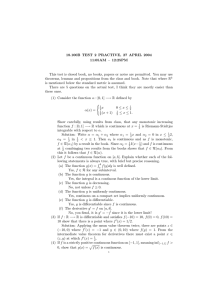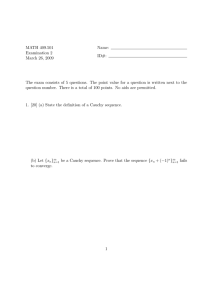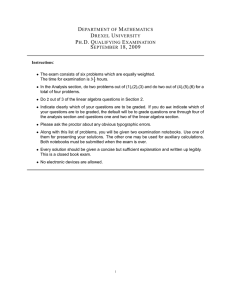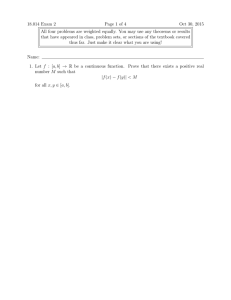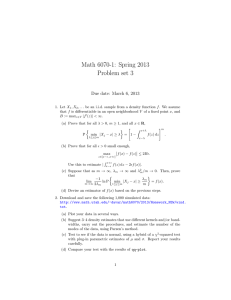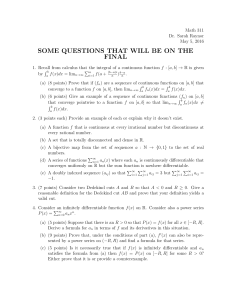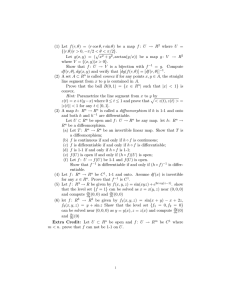517 HW4
advertisement
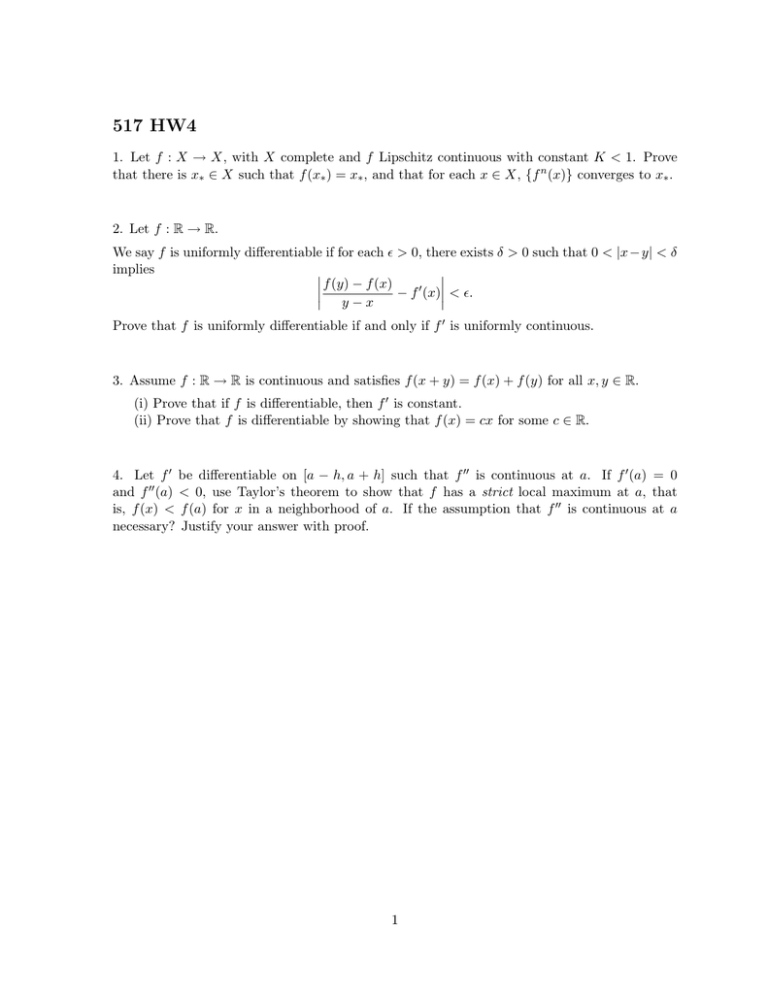
517 HW4
1. Let f : X → X, with X complete and f Lipschitz continuous with constant K < 1. Prove
that there is x∗ ∈ X such that f (x∗ ) = x∗ , and that for each x ∈ X, {f n (x)} converges to x∗ .
2. Let f : R → R.
We say f is uniformly differentiable if for each > 0, there exists δ > 0 such that 0 < |x−y| < δ
implies
f (y) − f (x)
0
< .
−
f
(x)
y−x
Prove that f is uniformly differentiable if and only if f 0 is uniformly continuous.
3. Assume f : R → R is continuous and satisfies f (x + y) = f (x) + f (y) for all x, y ∈ R.
(i) Prove that if f is differentiable, then f 0 is constant.
(ii) Prove that f is differentiable by showing that f (x) = cx for some c ∈ R.
4. Let f 0 be differentiable on [a − h, a + h] such that f 00 is continuous at a. If f 0 (a) = 0
and f 00 (a) < 0, use Taylor’s theorem to show that f has a strict local maximum at a, that
is, f (x) < f (a) for x in a neighborhood of a. If the assumption that f 00 is continuous at a
necessary? Justify your answer with proof.
1

![(1) If f : [0, 1] −→ R is continuous... Z f (x)dx = f (c).](http://s2.studylib.net/store/data/010518093_1-908690675bd939e7f32dbd691b6cbb60-300x300.png)
